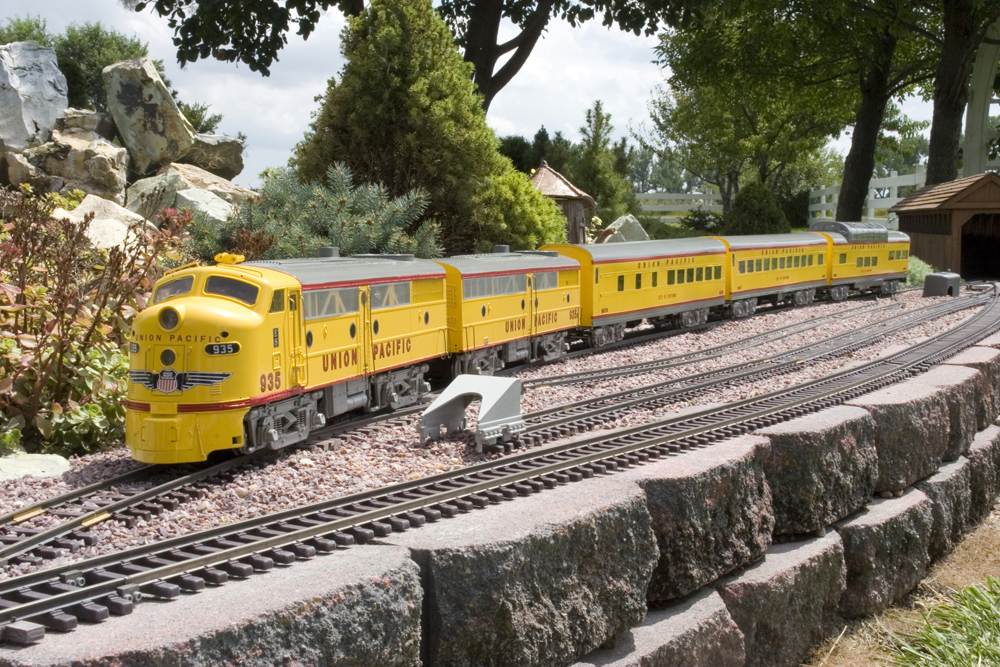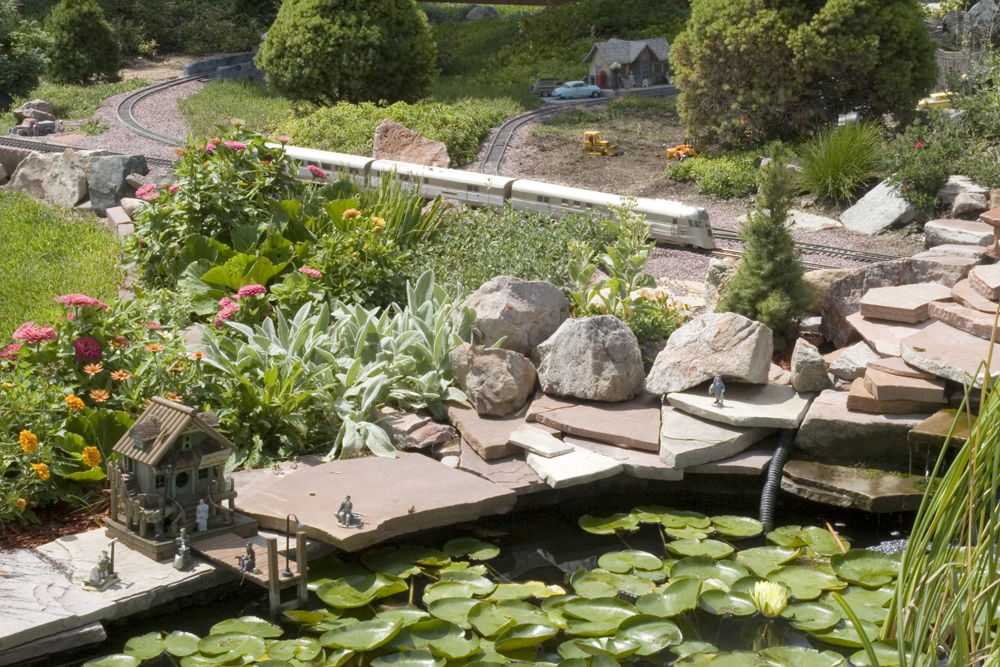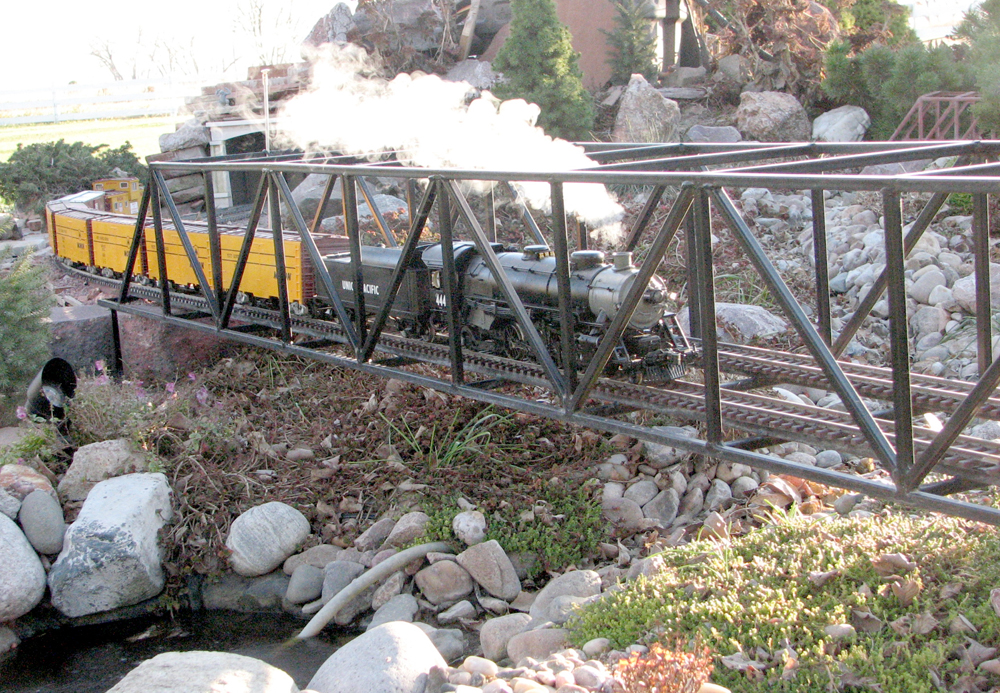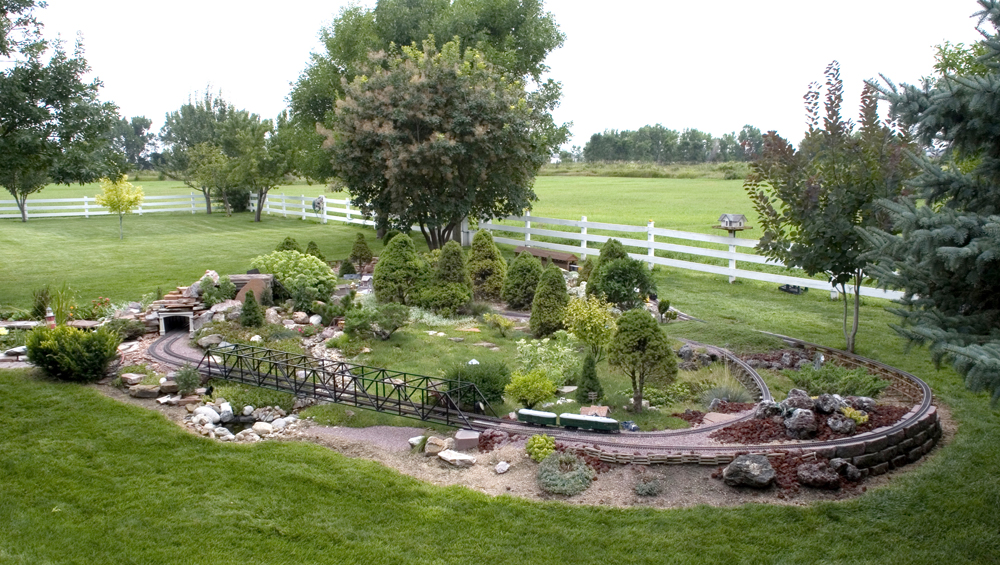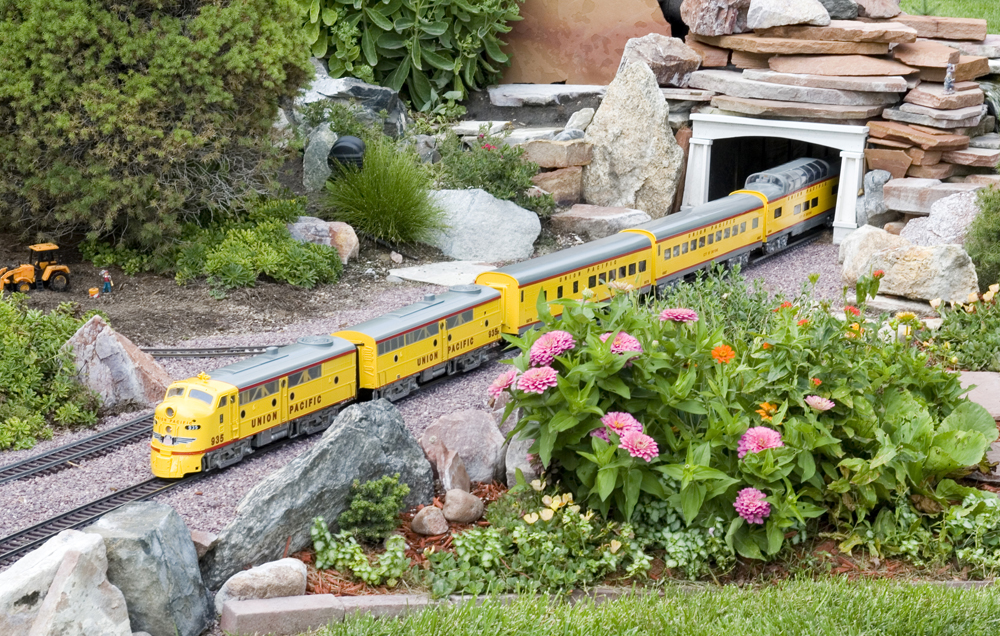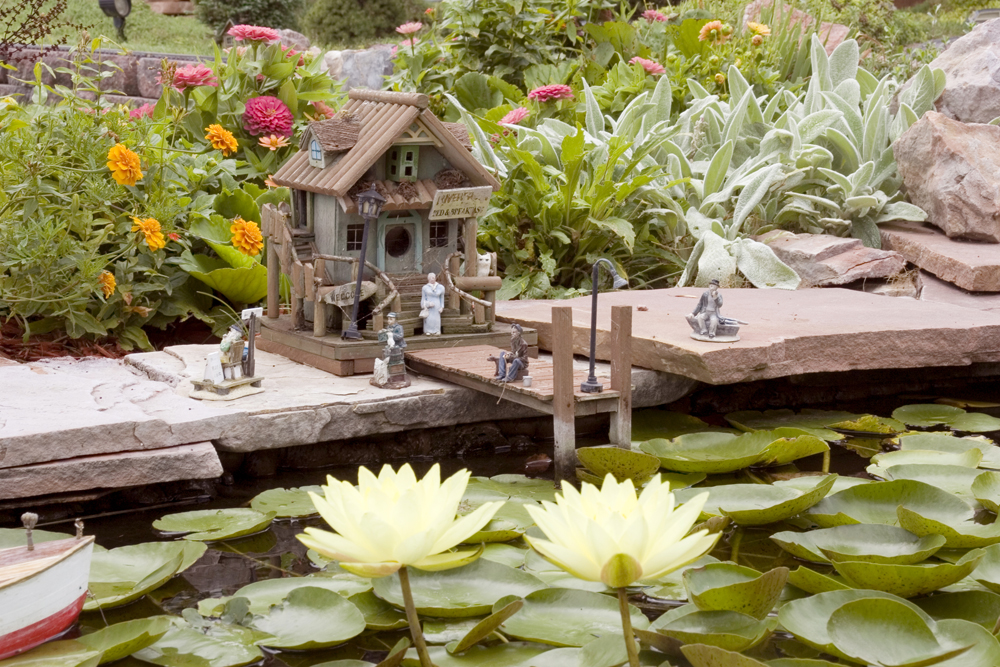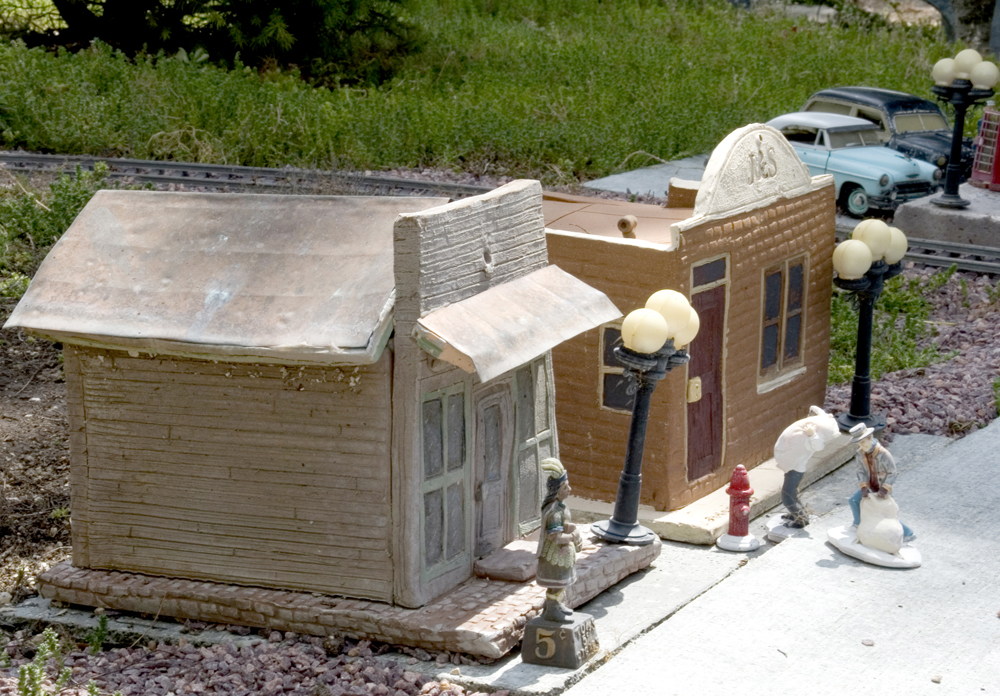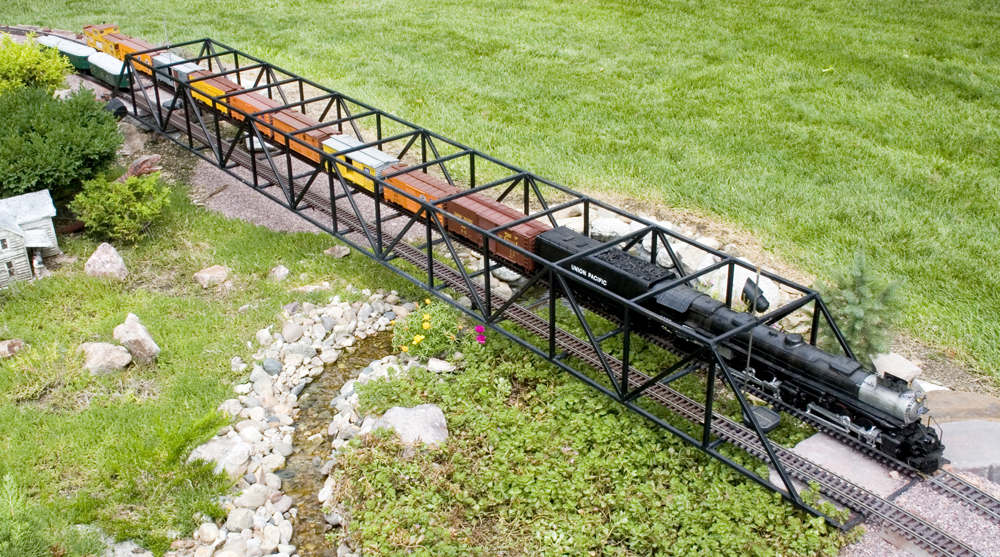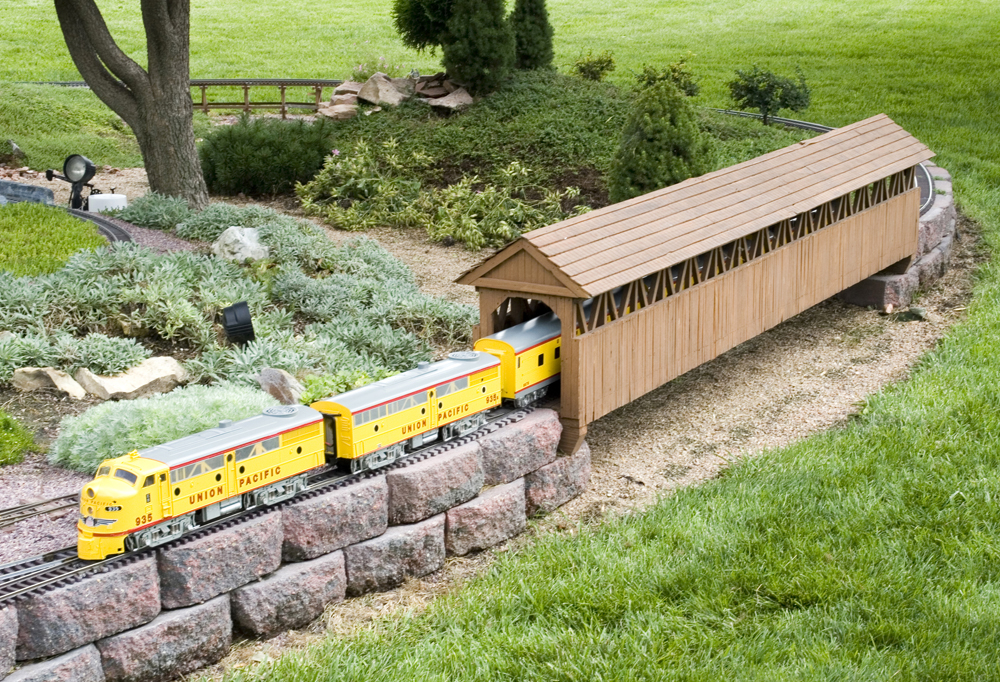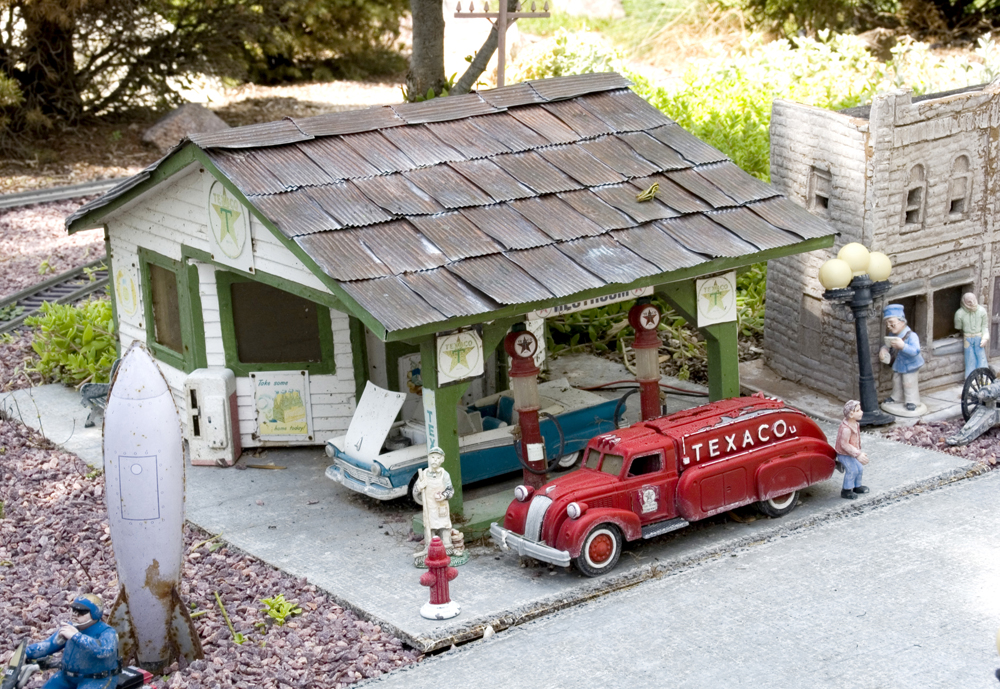Union Pacific trains dominate on this scenic garden railway
Mainline railroading in the 1950s
Railway at a glance
Name: Spring Creek Railroad
Size of railroad: Roughly 24′ x 62′
Scale: 1:29, 1:20.3, and 1:32
Gauge: 45mm
Era: Circa 1950s
Theme: Mainline railroading, mostly passenger and freight; some narrow gauge and branch/trolley line on the inner loop
Age: 14 years
Motive power: Live steam, track power, and battery
Length of mainline: Outer loop, 135′; inner loop, 115′
Minimum mainline radius: 9′
Maximum gradient: 0%
Type of track: Sunset Valley, code 250
Structures: Scratchbuilt from clay or wood; pond shack is a modified, purchased bird house
Control systems: Aristo-Craft Train Engineer, RCS, and manual

This UP streamliner was the first train the author made, having been inspired by rides on the prototype. The Aristo-Craft FA unit has an E-8 nose that he adapted to it to give it a more streamlined look, but keeping it a short engine. His wife Sylvia cut the vinyl lettering for this set and other trains. Photo by Marc Horovitz


A Robert’s Lines Pioneer Zephyr bypasses the town station on its record run. Larger-leaved annuals in the foreground force the perspective to create a true scale view of the town beyond. Photo by Marc Horovitz


The author’s live steam, Aristo-Craft Mikado enters the steel truss bridge in full cry. Photo by Marc Horovitz


Overall view of the railroad looking southwest. The battery-powered McKeen car is on the inner loop; the outer loop has track power. Planting groups of like plants into distinct habitats, as in open meadow, wetlands, wooded hills, and dry range, makes the whole railroad flow into a believable landscape. Photo by Marc Horovitz


The UP Streamliner emerges from the four foot, dual-track tunnel. This tunnel replaced a single-track tunnel that rotted out. It was an impediment to the construction of a separate inner loop. Colorful annuals at the garden’s edge create a psychological barrier for guests’ viewing from the lawn. Photo by Marc Horovitz


A commercial birdhouse provided the basis for this fishing shack. The base and dock were made from redwood. White water lilies reflect color from a garden of (left to right) orange marigolds, pink zinnias, and fuzzy, silver lamb’s ear. Photo by Marc Horovitz


Two more of the author’s scratchbuilt clay buildings. The reddish one is modeled after one that used to sit by the tracks in Lexington, Nebraska. Lemax figures are frequently used on the railroad. Sedums grow in a field beyond. Photo by Marc Horovitz


The Challenger, built by the author, pulls a consist of MDC cars over the dual-track, metal bridge. Jerry designed the bridge and cut the metal; a friend welded it together. As often happens in nature, the stream bank separates an Irish-moss meadow on the left from a sedum meadow on right. A succulent annual, portulaca (or moss rose) blooms pink and yellow near the bridge. Photo by Marc Horovitz


Groundcovers are color-massed for maximum appeal, lime green (far left), blue green (center), and deep-dark green (right), which stands off from the bright-green lawn. Photo by Marc Horovitz


The Texaco Station is of wood-and-metal construction. Pumps are from a Christmas-light set and glow red at night. Photo by Marc Horovitz

Want to see more garden railroads?
The Chichester and Sweet Hollow RR
The Kettle Valley Railway
The Pacific Northern





